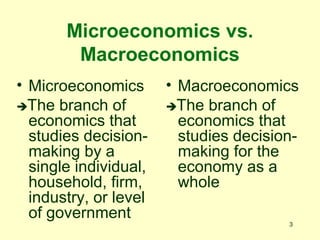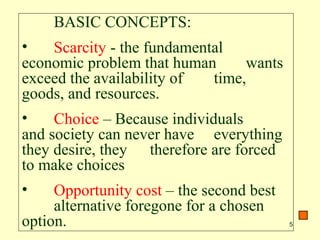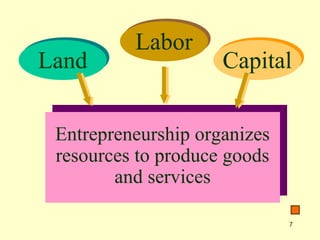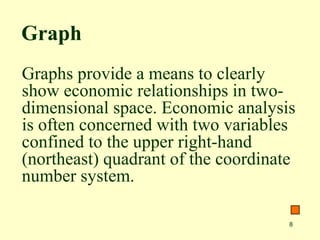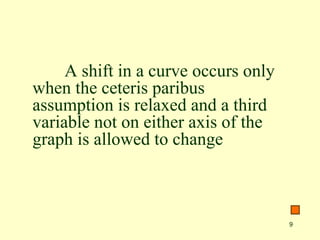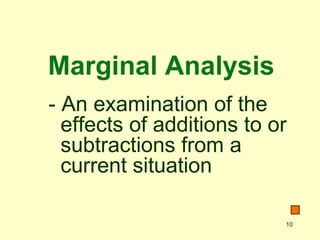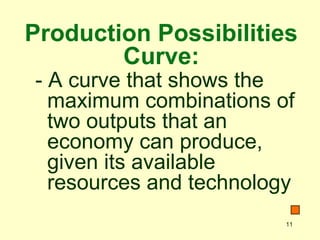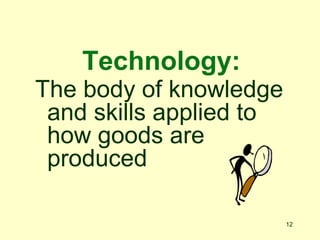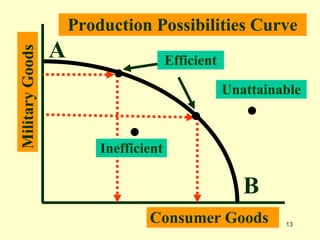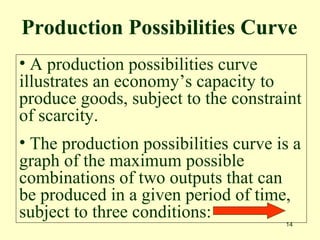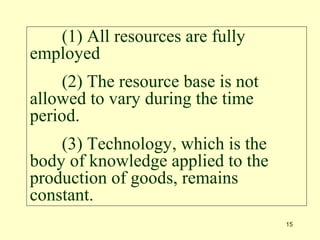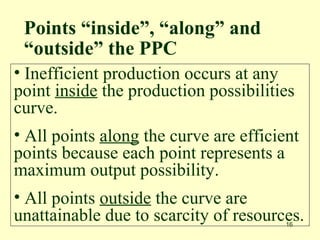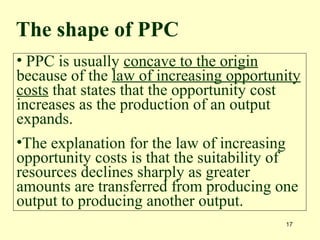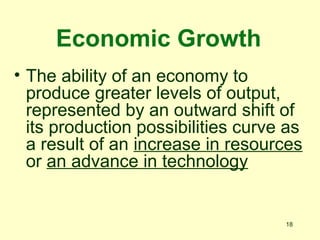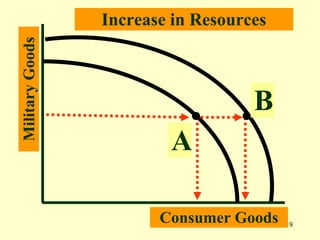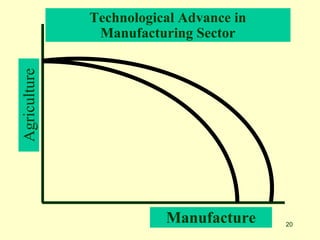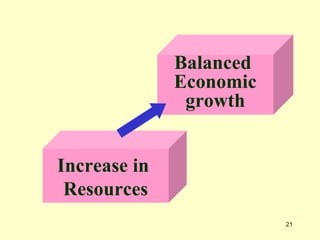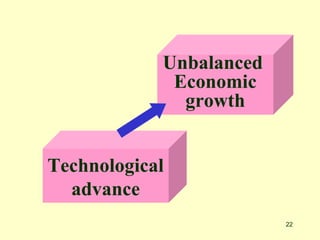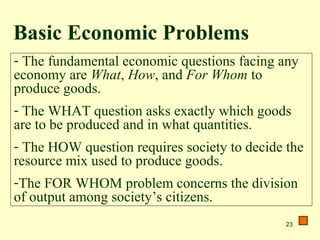Chapter1introductionwithoutgraph 130103102534-phpapp01
- 2. 2 Definition of Economics The study of how society chooses to allocate its scarce resources to the production of goods and services in order to satisfy unlimited wants
- 3. 3 Microeconomics vs. Macroeconomics ŌĆó Macroeconomics ’ā©The branch of economics that studies decision- making for the economy as a whole ŌĆó Microeconomics ’ā©The branch of economics that studies decision- making by a single individual, household, firm, industry, or level of government
- 4. 4 What is Ceteris Paribus? A Latin phrase that means that while certain variables can change, ŌĆ£all other things remain unchangedŌĆØ
- 5. 5 BASIC CONCEPTS: ŌĆó Scarcity - the fundamental economic problem that human wants exceed the availability of time, goods, and resources. ŌĆó Choice ŌĆō Because individuals and society can never have everything they desire, they therefore are forced to make choices ŌĆó Opportunity cost ŌĆō the second best alternative foregone for a chosen option.
- 6. 6 1. Land Resource - any natural resource provided by nature 2. Labour - The mental and physical capacity of workers to produce goods and services 3. Capital - The physical plants, machinery, and equipment used to produce other goods (Financial capital - The money used to purchase capital) 4. Entrepreneurs - The creative ability of individuals to seek profits by combining resources to produce innovative products Factors of Production
- 7. 7 LandLand LaborLabor CapitalCapital Entrepreneurship organizes resources to produce goods and services Entrepreneurship organizes resources to produce goods and services
- 8. 8 Graphs provide a means to clearly show economic relationships in two- dimensional space. Economic analysis is often concerned with two variables confined to the upper right-hand (northeast) quadrant of the coordinate number system. Graph
- 9. 9 A shift in a curve occurs only when the ceteris paribus assumption is relaxed and a third variable not on either axis of the graph is allowed to change
- 10. 10 Marginal Analysis - An examination of the effects of additions to or subtractions from a current situation
- 11. 11 Production Possibilities Curve: - A curve that shows the maximum combinations of two outputs that an economy can produce, given its available resources and technology
- 12. 12 Technology: The body of knowledge and skills applied to how goods are produced
- 13. 13 A B MilitaryGoods Consumer Goods Unattainable Inefficient Production Possibilities Curve Efficient
- 14. 14 ŌĆó A production possibilities curve illustrates an economyŌĆÖs capacity to produce goods, subject to the constraint of scarcity. ŌĆó The production possibilities curve is a graph of the maximum possible combinations of two outputs that can be produced in a given period of time, subject to three conditions: Production Possibilities Curve
- 15. 15 (1) All resources are fully employed (2) The resource base is not allowed to vary during the time period. (3) Technology, which is the body of knowledge applied to the production of goods, remains constant.
- 16. 16 ŌĆó Inefficient production occurs at any point inside the production possibilities curve. ŌĆó All points along the curve are efficient points because each point represents a maximum output possibility. ŌĆó All points outside the curve are unattainable due to scarcity of resources. Points ŌĆ£insideŌĆØ, ŌĆ£alongŌĆØ and ŌĆ£outsideŌĆØ the PPC
- 17. 17 ŌĆó PPC is usually concave to the origin because of the law of increasing opportunity costs that states that the opportunity cost increases as the production of an output expands. ŌĆóThe explanation for the law of increasing opportunity costs is that the suitability of resources declines sharply as greater amounts are transferred from producing one output to producing another output. The shape of PPC
- 18. 18 Economic Growth ŌĆó The ability of an economy to produce greater levels of output, represented by an outward shift of its production possibilities curve as a result of an increase in resources or an advance in technology
- 19. 19 A MilitaryGoods Consumer Goods Increase in Resources B
- 23. 23 - The fundamental economic questions facing any economy are What, How, and For Whom to produce goods. - The WHAT question asks exactly which goods are to be produced and in what quantities. - The HOW question requires society to decide the resource mix used to produce goods. -The FOR WHOM problem concerns the division of output among societyŌĆÖs citizens. Basic Economic Problems



